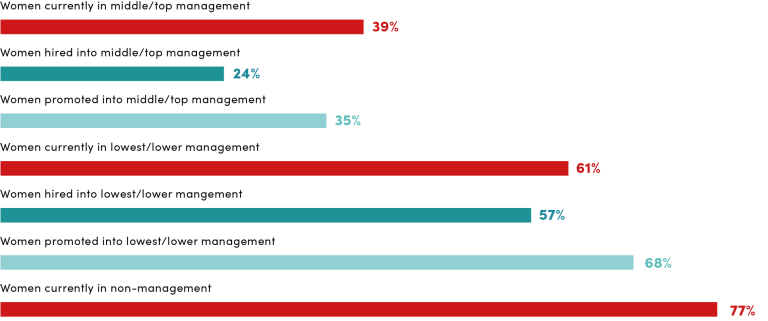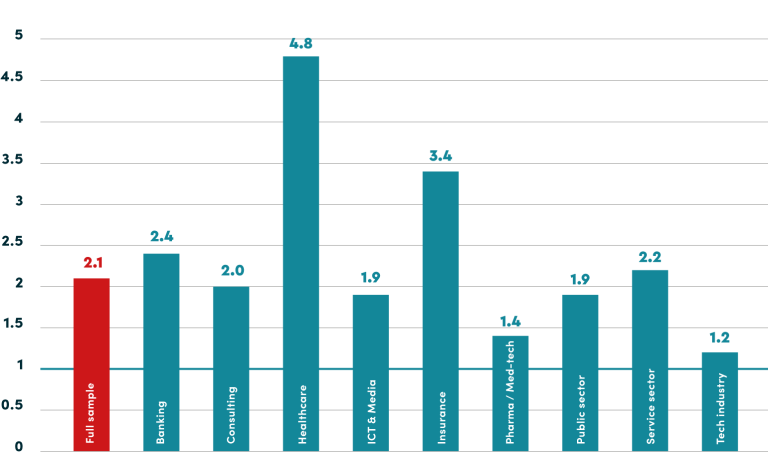The healthcare industry begins with a female representation of 77% in non-management positions, making women the clear majority at this level. In top management, however, the female share drops to just 28%, resulting in a loss of 49 percentage points—more than in any other sector. The steepest decline occurs between lower and middle management: while women still hold the majority in lower management at 59%, their representation falls by 18 percentage points to 41% in middle management.
Overall, the proportion of women is higher in promotions than in external hires. For example, in lowest/lower management, the share of women among promotions is 68%, which is 11 percentage points higher than among new hires (57%) for the same positions. The promotion rate for women also exceeds the current share of women in these levels (61%), whereas the hiring rate does not. However, both figures remain below the share of women in the pipeline (non-management: 77%).
In middle/top management, the share of women among promotions (35%) is also higher than among hires (24%). However, both figures are well below the proportion of women in the pipeline (61%) and also fall short of the current female representation in middle/top management roles.
Particularly in recruitment, the healthcare sector needs to make further progress in order to bring more women into higher-level positions.

The Glass Ceiling Index of 4.8 means that women are disadvantaged in reaching the upper levels of the career ladder. In the healthcare industry, the barriers for women are higher than in any other industry.

In the healthcare industry, it becomes evident that women need to increase their employment percentages if they want to move from non-management to the lowest management level and from middle management to top management. Men work at employment rates of at least 88% across all levels, which is why the differences between the hierarchy levels are very small for them. In non-management positions, women have average employment rates of 75%, which is 13 percentage points lower than those of men in the same positions. Furthermore, it is 18 percentage points lower than the average employment rates of women in top management. However, there are big differences in employment percentages between the different job types, such as medical staff and nursing & therapies.